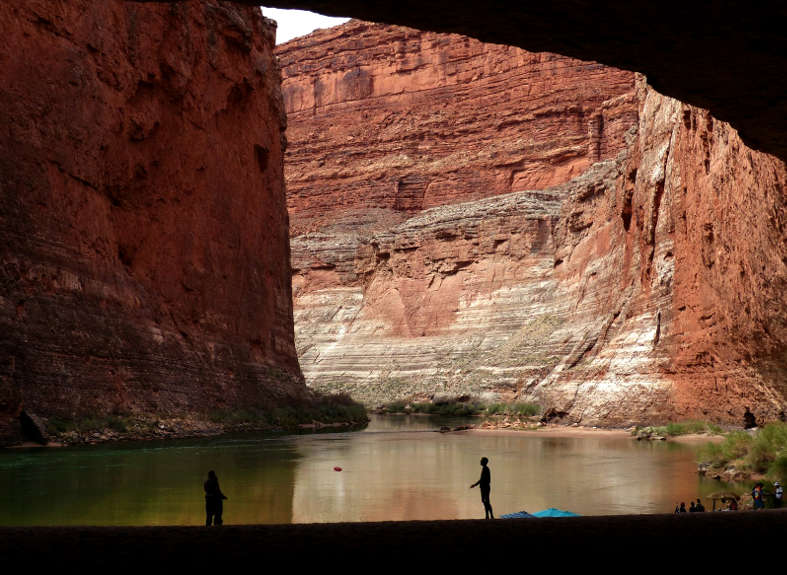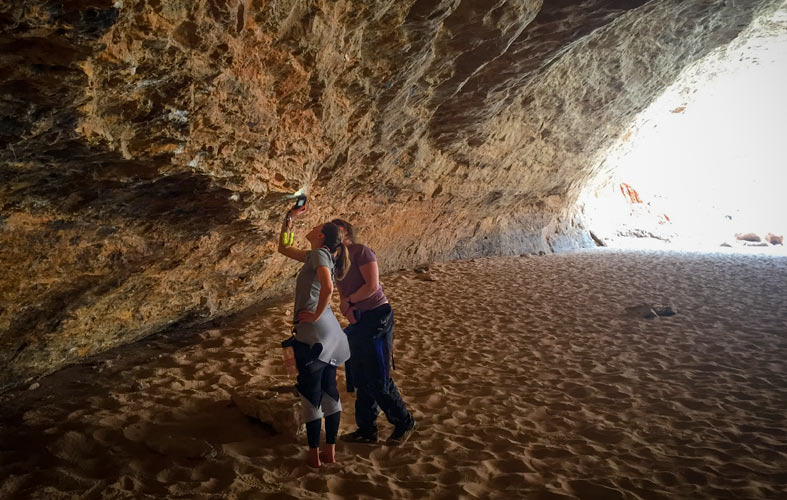‘I love finding fossils’
“I love finding fossils,’ Millie says. “In geology, it’s usually like, ‘This very slow thing happened, and here’s the result.’ It’s more of an arm wave and not like pointing at it. So I think it’s really satisfying to see something and say, ‘There it is!’ I love that.’
She’s not alone. Nearby, students Roxanne Banker and Kevin Schrecengost are pointing out evidence of coral, signs that this was once part of a warmer ocean.
The Grand Canyon feels about as far away from an ocean as you can get. But there are students here from the UC Davis Bodega Marine Laboratory. When I first arrived, I wondered naively what these marine ecologists would get out of visiting the desert.
The fossils of past marine life embedded in the Grand Canyon are constant reminders of how the ocean and land tie together throughout Earth’s history. We’ll see some really cool marine fossils later in the day when we hike in Nautiloid Canyon.
Nature’s theater
When I turn around from the darkened wall, the cavern perfectly frames the Colorado River and surrounding cliffs. Viewing such a light-drenched scene while still in the darkness is like sitting in a movie theater, only vastly better.
A game of Frisbee does indeed break out. So does a ukulele. In an amphitheater like this, it’s only right to play.
- Kat Kerlin








